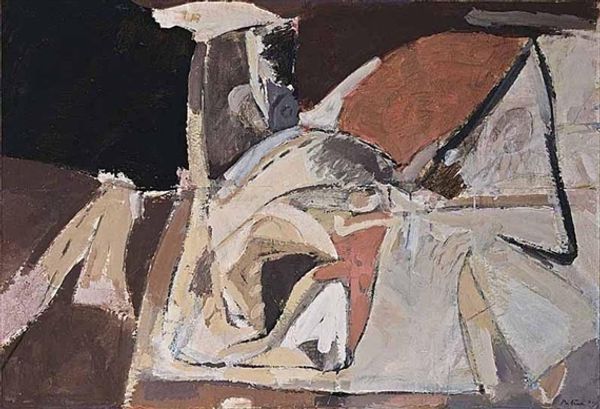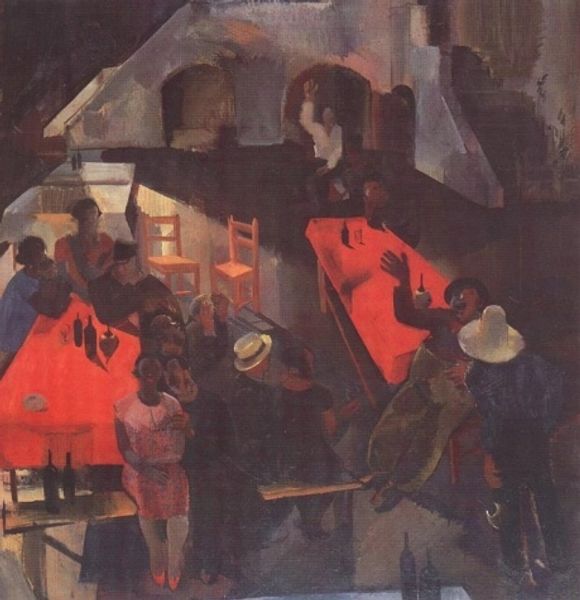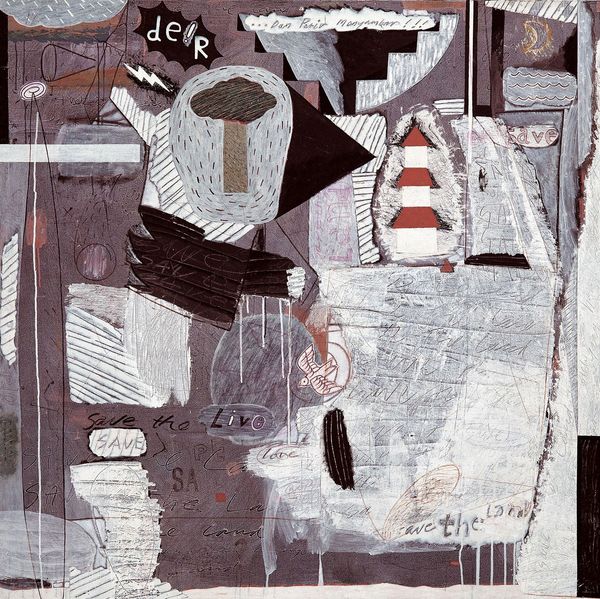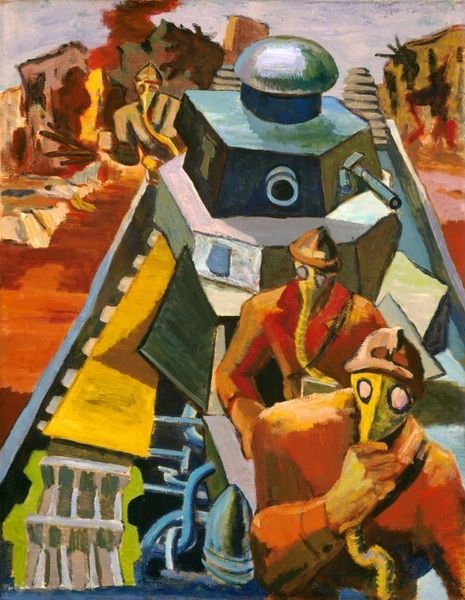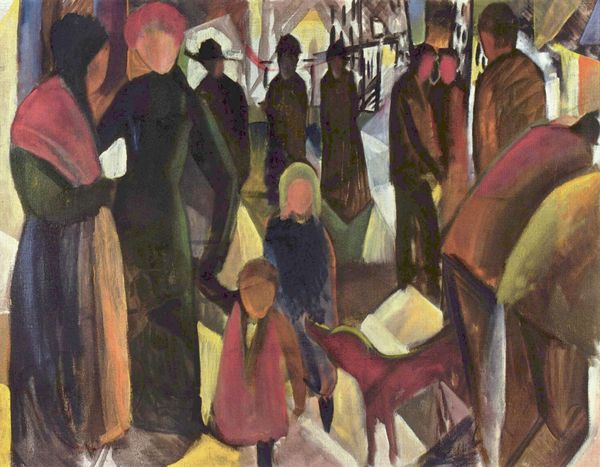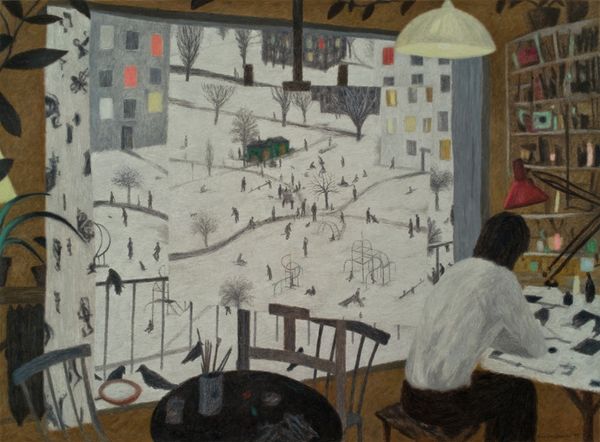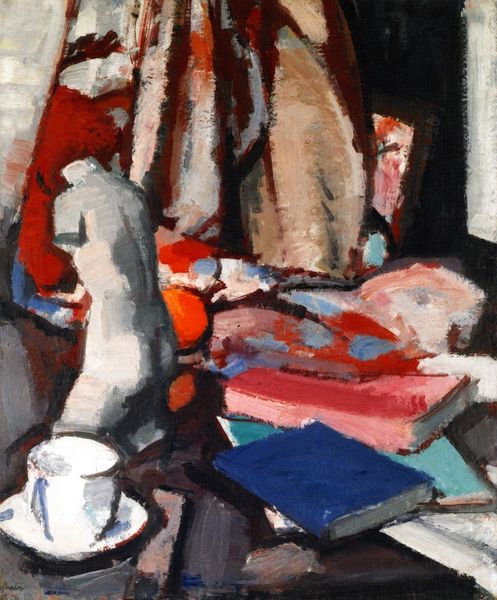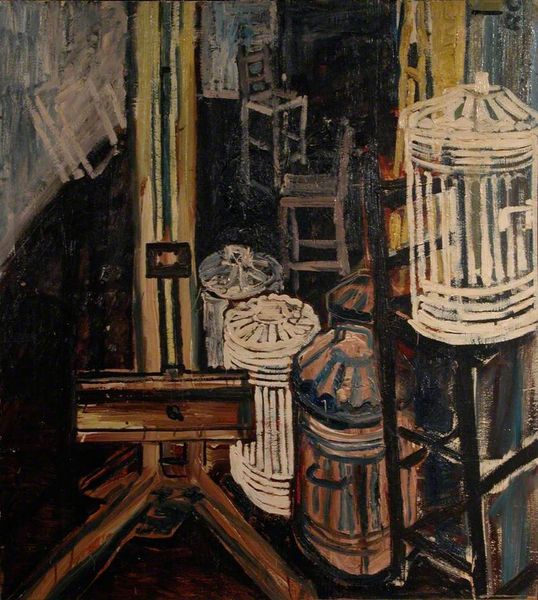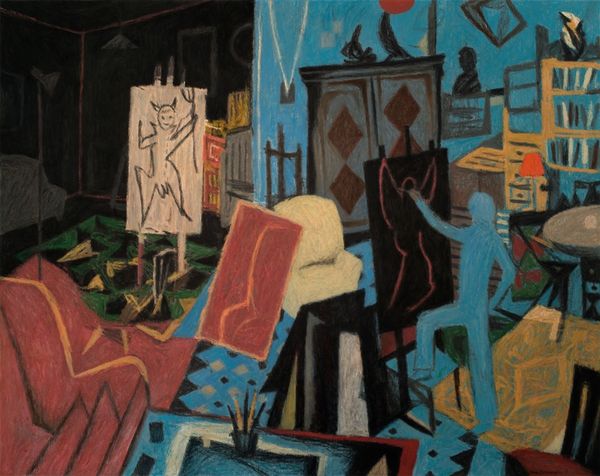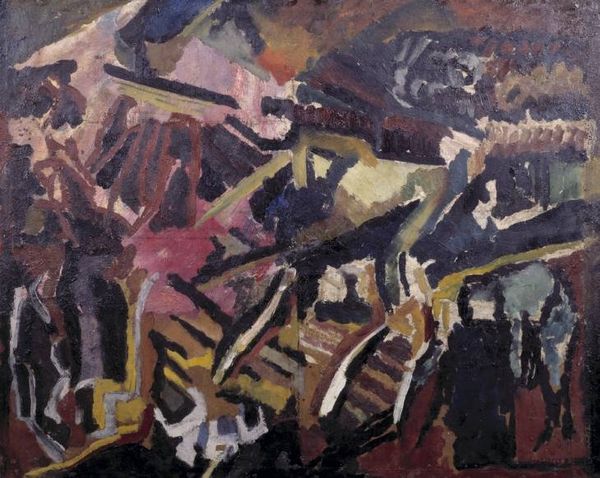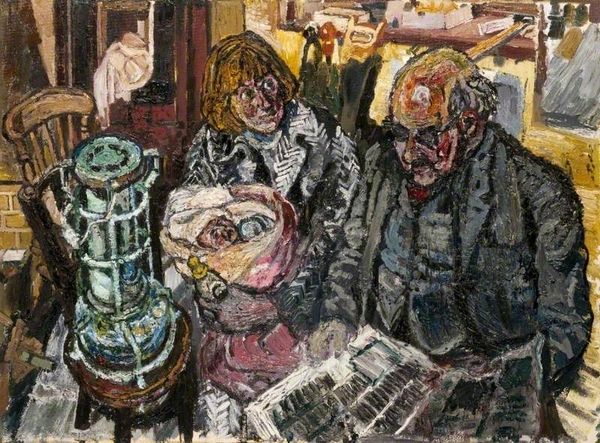
#
tree
#
graffiti
#
graffiti art
#
street art
#
painted
#
mural art
#
street graffiti
#
spray can art
#
urban art
#
square
#
paint stroke
#
painting art
#
street
Copyright: Gino Severini,Fair Use
Editor: We are looking at "North" by Gino Severini. It’s a street scene, looking almost like collaged planes of color, of shades of grey. It is a painting of a Parisian street, but I feel lost somehow. Where does he want to take me? Curator: Lost how? Are you reacting to the fractured forms and flattened perspective? Severini was deeply involved with Futurism, even though he spent much of his career in Paris. What you're seeing is the influence of Cubism melded with Futurist dynamism, all in service of depicting modern life, with all its fragmented sensations. Editor: So, he’s not trying to represent reality so much as evoke a feeling of modernity? The painting shows the "Pigalle" sign, so the art shows daily life near Montmartre, is it not? Curator: Exactly. Consider what was happening historically: Paris in the early 20th century was a vortex of cultural and social change. Artists were grappling with new technologies, urbanization, and shifting social norms. Severini isn't simply painting a street, but an experience of being on that street and what it all implied, from new forms of advertisement to modern modes of transportation. He shows its new values as well as visual appearance. Editor: The fractured planes do evoke a sense of speed, but also instability. So much is crammed together here. Is that on purpose? Curator: Absolutely. Severini and his Futurist cohorts embraced the chaos and energy of the modern world. By breaking down form, they aimed to capture not just an object's appearance, but its movement, its sound, its very essence in time and space. This all challenged traditional notions of what art should represent, as well as who it should serve in its new artistic and social form. Editor: That gives me a completely new perspective. I saw it as just an interesting street scene. Curator: Seeing how art reflects—and shapes—cultural shifts opens up a whole new dimension to the work. Editor: Yes, thanks a lot. I now get the influence and purpose behind Severini’s abstraction and deconstruction of form.
Comments
No comments
Be the first to comment and join the conversation on the ultimate creative platform.
